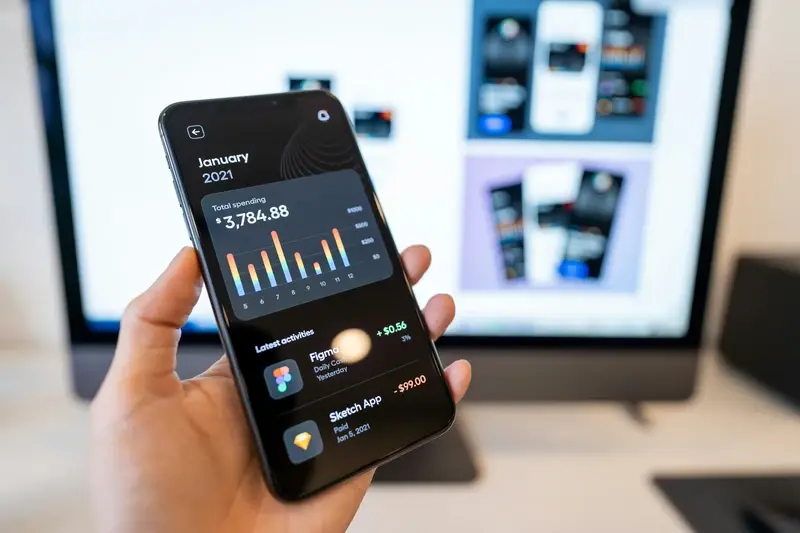Can I Store Payment Details In My Mobile App Safely?
Every day, millions of people tap 'buy now' on their phones without a second thought. They're trusting their card details, bank information, and hard-earned money to apps they've downloaded. But here's the thing that keeps me up at night—most app developers have no idea how dangerous storing payment details can be. One wrong move and you're not just risking your business; you're putting your users' financial lives at risk.
Building a mobile app that handles payments isn't like creating a simple photo-sharing app. When financial data enters the picture, everything changes. The rules get stricter, the risks get higher, and the consequences of getting it wrong can be devastating. I've seen businesses shut down overnight because they didn't understand PCI compliance. I've watched developers accidentally expose thousands of credit card numbers because they stored them in the wrong place.
The moment you decide to handle payment data in your mobile app, you're entering one of the most regulated spaces in technology
This guide will walk you through everything you need to know about safely handling payment details in your mobile app. We'll cover what financial data actually is, why PCI compliance matters, and most importantly—where you should and shouldn't store sensitive information. By the end, you'll know exactly how to build payment features that protect your users and keep your business safe.
What Is Payment Data and Why Does It Matter
Payment data is any information that helps someone make a purchase or complete a transaction. This includes credit card numbers, expiry dates, CVV codes, bank account details, and even billing addresses. Basically, if you need it to buy something online, it's payment data.
Now, you might think this sounds straightforward—and it is—but the implications are huge. When users enter their card details into your app, they're placing enormous trust in you. They're saying "I believe you'll keep my financial information safe" and that's not something to take lightly.
Why This Data Is So Valuable
Payment data is like digital gold for criminals. With just a few pieces of information, someone can make fraudulent purchases, steal identities, or sell the data to other bad actors. This is why hackers target payment systems so aggressively—the potential payout is massive.
But it's not just about the monetary value. When payment data gets stolen, it damages your reputation and breaks the trust users have in your app. People will delete your app and warn others to stay away. I've seen businesses never recover from major data breaches.
The Legal Side of Things
Beyond the moral responsibility, there are serious legal requirements around handling payment data. Regulations like PCI DSS (Payment Card Industry Data Security Standard) set strict rules about how this information must be stored, processed, and transmitted. Breaking these rules can result in massive fines and legal action.
Understanding PCI Compliance for Mobile Apps
Right, let's talk about PCI compliance—something that sounds incredibly boring but is actually quite straightforward once you get your head around it. PCI stands for Payment Card Industry, and it's basically a set of rules that anyone handling credit card information must follow. Think of it as the rulebook for keeping card details safe.
If your mobile app processes, stores, or transmits credit card data, you'll need to comply with PCI DSS (Data Security Standard). This isn't optional—it's the law. The good news? Most app developers I work with don't actually need to worry about full PCI compliance because they're not storing card details directly.
The Four Levels of PCI Compliance
PCI compliance comes in four levels, depending on how many card transactions you process annually:
- Level 1: Over 6 million transactions (most complex requirements)
- Level 2: 1-6 million transactions
- Level 3: 20,000-1 million transactions
- Level 4: Under 20,000 transactions (simplest requirements)
The higher your level, the more security measures you'll need. Level 1 merchants need annual on-site assessments, whilst Level 4 businesses can often complete a simple self-assessment questionnaire.
Here's something I always tell clients: if you're just starting out, aim to avoid storing any payment data in your app at all. Use a payment processor that handles PCI compliance for you—it'll save you months of headaches and thousands in compliance costs.
The reality is that achieving PCI compliance isn't just about ticking boxes; it requires ongoing monitoring, regular security testing, and detailed documentation. Just like with other types of compliance requirements, the key is understanding what's needed from the beginning rather than trying to retrofit compliance later.
Where Should Payment Details Actually Be Stored
Right, let's get straight to the point—you shouldn't store payment details in your mobile app. Full stop. I know that might sound a bit harsh, but after years of working with payment systems, I can tell you this is the golden rule that keeps both you and your users safe.
The safest place for payment information is with certified payment processors like Stripe, PayPal, or Square. These companies have spent millions building secure systems that meet all the strict rules about handling money. They have teams of security experts working around the clock to keep everything locked down tight.
What About Tokenisation?
Now, if you need to store something for repeat purchases, you can use tokens. Think of a token as a special code that represents the payment card without actually being the card details. Your payment processor creates these tokens and stores the real card information safely on their servers. You keep the token in your app—which is useless to hackers—and use it to process payments through the secure system.
This way, your users get a smooth experience without you having to worry about storing sensitive financial data. It's a win-win situation that keeps everyone happy and secure.
Building Safe Payment Features in Your App
Right, let's get down to the practical stuff. Building payment features for your mobile app isn't something you want to wing—there's too much at stake. I've worked on dozens of apps that handle payments, and the difference between a secure implementation and a vulnerable one often comes down to following some basic principles.
First up, never store card details directly in your app. I know it sounds tempting to save users the hassle of re-entering their card number, but storing financial data on the device is asking for trouble. Instead, use tokens from your payment processor—these are basically useless strings of characters that represent the real card details without actually being them.
Encryption Is Your Best Friend
Any payment data that touches your app needs to be encrypted. This means using HTTPS for all communications and encrypting data at rest. The good news is that modern payment SDKs handle most of this heavy lifting for you—but you still need to implement them properly.
Security isn't a feature you can bolt on later; it needs to be baked into every part of your payment system from day one
Don't try to build your own payment processing system either. Seriously, just don't. Use established payment processors like Stripe, PayPal, or Square—they've spent millions getting PCI compliance right, and they're much better at it than you'll ever be. Your job is to integrate their secure solutions, not reinvent the wheel.
Common Mistakes That Put User Data at Risk
After years of building mobile apps, I've seen the same payment security mistakes happen time and time again. The scary part? Most developers don't even realise they're making them until it's too late.
One of the biggest blunders I see is storing card details locally on the device. I get it—it seems convenient for users, but you're creating a massive security risk. If someone gets hold of that phone, your users' financial information is sitting there like an open book.
The Most Dangerous Mistakes
- Keeping card numbers, CVV codes, or expiry dates on the device
- Using basic encryption that can be easily broken
- Sending payment data over unsecured connections
- Not validating SSL certificates properly
- Storing payment tokens alongside user identification data
- Logging sensitive payment information for debugging
Another mistake that keeps me up at night is when developers think they can handle payment processing themselves. Trust me, you can't—and you shouldn't try. The payment industry has strict rules for good reason.
Why These Mistakes Happen
Most of these errors come from good intentions. Developers want to create smooth user experiences, but they end up cutting corners on security. The problem is that payment data isn't like other app data—it needs data protection measures at every step.
Many of these security issues could be caught early with proper code review processes, which is why having the right development practices in place is crucial when handling sensitive financial data.
Working with Payment Processors and Third-Party Services
Right, let's talk about the smart way to handle payments in your mobile app—by not handling them yourself! After years of building apps that deal with money, I can tell you that the best approach is to let the experts handle the tricky bits. Payment processors like Stripe, PayPal, or Square have teams of security specialists who spend their entire days making sure financial data stays safe.
When you integrate these services into your mobile app, you're basically passing the buck (in a good way) to companies that already have PCI compliance sorted out. Your app becomes a bridge between your users and these secure payment systems, rather than a vault that stores sensitive information. Think of it like having a professional security company guard your house instead of trying to build your own alarm system from scratch.
Choosing the Right Payment Partner
Not all payment processors are created equal, and picking the wrong one can cause headaches down the road. Look for services that offer mobile SDKs—these are pre-built tools that make integration much easier. You'll also want to check their fees, supported countries, and whether they handle the type of transactions your app needs.
Always test payment flows thoroughly before launching. Set up sandbox accounts with your chosen processor and run through every possible scenario, including failed payments and refunds.
The beauty of working with established payment processors is that they've already done the heavy lifting when it comes to security and compliance. Your job becomes making sure the integration works smoothly and that user data flows securely between your app and their systems.
Proper testing is crucial here, and you should avoid common testing pitfalls that could leave security vulnerabilities undetected before your app goes live.
Best Practices for Keeping Financial Data Secure
Right, let's talk about the practical stuff you need to do to keep financial data safe in your mobile app. I've seen plenty of apps get this wrong over the years—and trust me, it's not pretty when things go sideways.
The golden rule is simple: don't store what you don't need. If your app processes payments, you probably don't need to keep card numbers hanging around. Instead, use tokenisation—this means storing a random string of characters that represents the payment method without actually being the payment method itself.
Core Security Measures
Here are the non-negotiables when handling financial data:
- Always encrypt data both in transit and at rest
- Use HTTPS for all communication—no exceptions
- Implement proper user authentication and session management
- Regular security audits and penetration testing
- Keep your app and all dependencies updated
- Use certificate pinning to prevent man-in-the-middle attacks
Modern security practices often include lessons learned from blockchain security implementations, which have pushed the boundaries of how we think about protecting financial data in mobile applications.
Real-World Implementation
Most successful apps I've worked on follow a similar pattern: they collect payment info, immediately send it to a secure payment processor, and store only the reference token. The actual sensitive data never touches their servers.
And here's something I can't stress enough—train your development team properly. The best security measures in the world won't help if someone accidentally commits API keys to your public repository!
For apps handling particularly sensitive transactions, you might also want to consider implementing additional user protection features that go beyond basic payment security to create a comprehensive safety framework.
Conclusion
After years of building mobile apps that handle financial data, I can tell you with confidence that storing payment details safely in your mobile app is absolutely possible—but only if you do it properly. The key word here is properly, not just hoping for the best and crossing your fingers!
The truth is, most apps shouldn't be storing payment details at all. Working with established payment processors and third-party services removes the headache of PCI compliance whilst giving your users the security they deserve. Why reinvent the wheel when companies like Stripe, PayPal, and Square have already spent millions perfecting secure payment systems?
If you do need to handle financial data directly, PCI compliance isn't optional—it's the law. The standards exist for good reason; they protect both your users and your business from costly data breaches that can destroy reputations overnight. I've seen too many apps fail because they cut corners on security, thinking they could get away with basic protection measures.
Building a secure mobile app means thinking about security from day one, not as an afterthought. Your users trust you with their most sensitive information, and that trust is worth more than any shortcut you might be tempted to take.
Share this
Subscribe To Our Learning Centre
You May Also Like
These Related Guides

How Do I Ensure Regulatory Compliance When Developing A Mobile Banking App?

What Security Measures Does My Business App Need?



